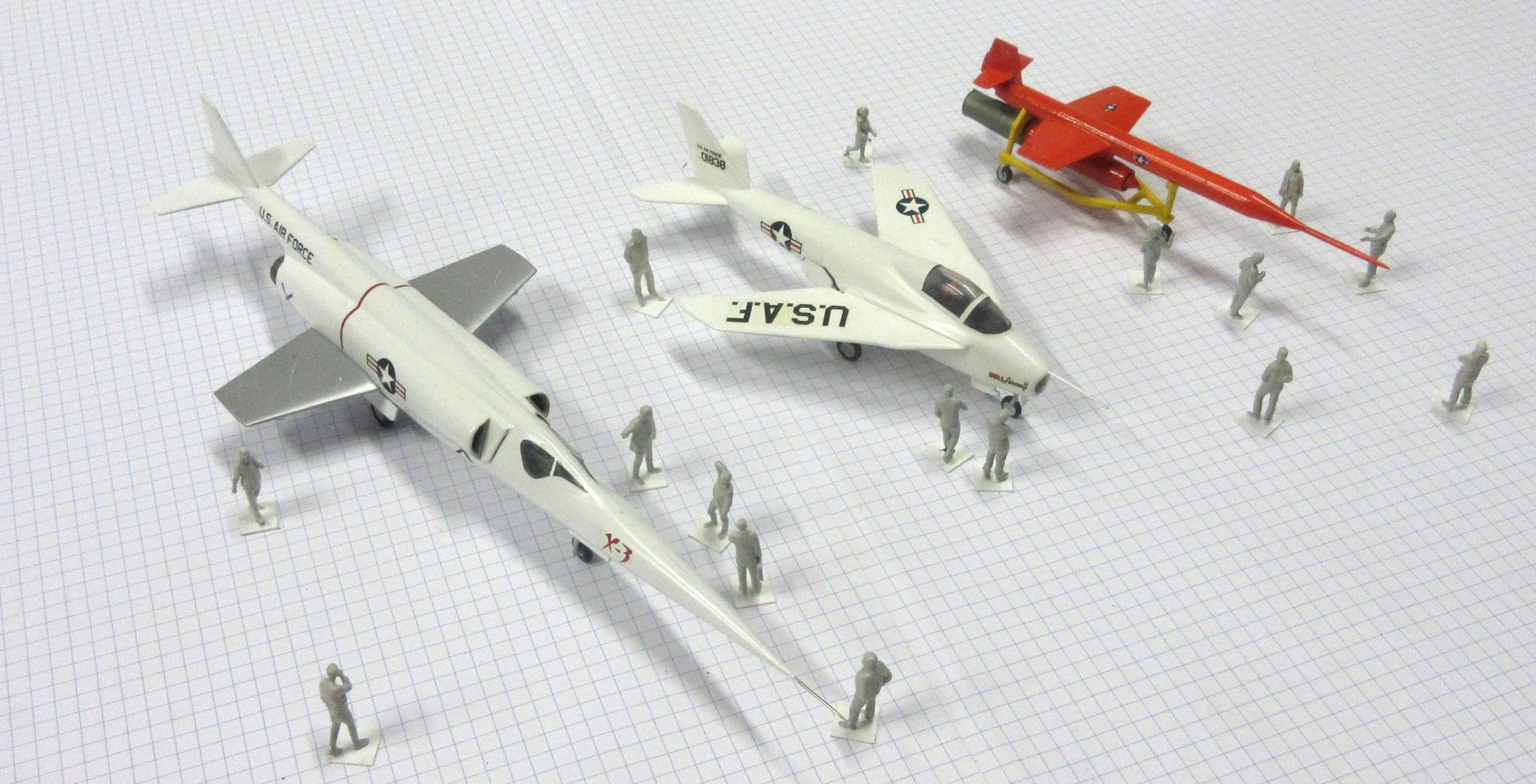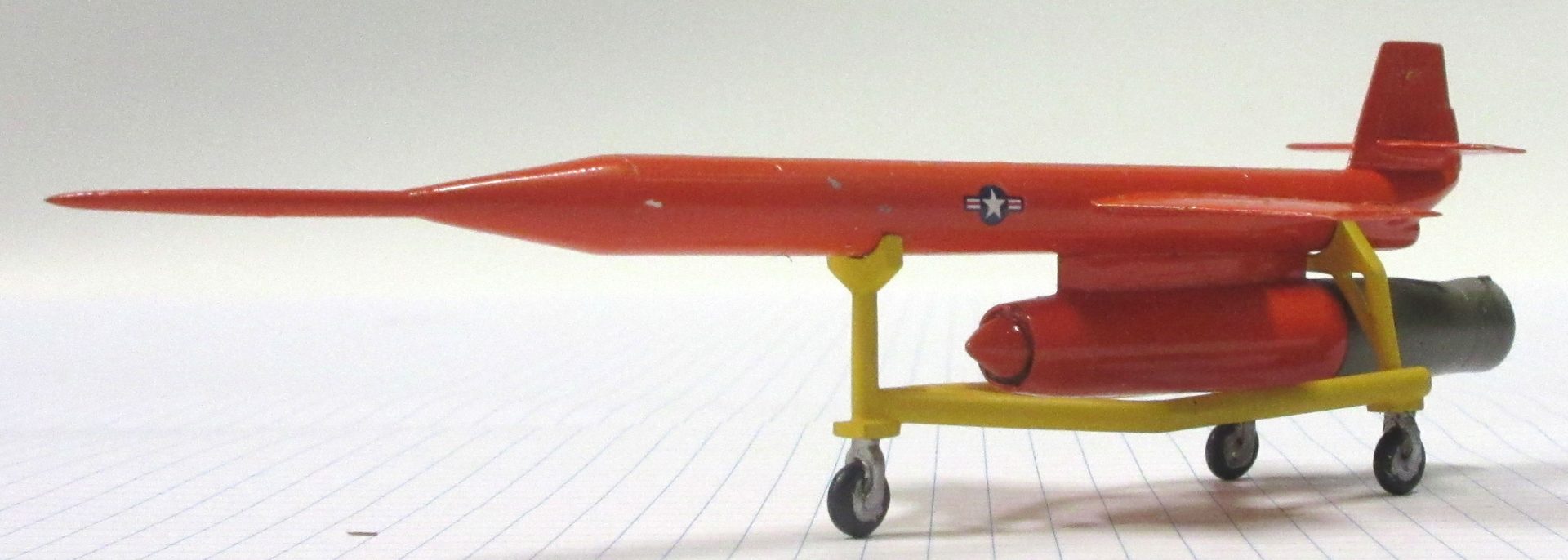Early X-Planes
Douglas X-3 – Bell X-5 – Lockheed X-9
 There is something romantic about the early X-planes. The whole idea began towards the end of World War 2 when various organizations in the United States, including NACA, the USAAF and USN, wanted to conduct research into high speed flight. The first X-plane was the Bell X-1 which was the first aircraft to break the sound barrier. Since then X-planes had been commissioned to test many areas of the aeronautical environment and many wonderful looking aeroplanes have flown with the X designation. So let’s look at three early ones.
There is something romantic about the early X-planes. The whole idea began towards the end of World War 2 when various organizations in the United States, including NACA, the USAAF and USN, wanted to conduct research into high speed flight. The first X-plane was the Bell X-1 which was the first aircraft to break the sound barrier. Since then X-planes had been commissioned to test many areas of the aeronautical environment and many wonderful looking aeroplanes have flown with the X designation. So let’s look at three early ones.
Douglas X-3 in 1/72 by Planet
This aircraft looks like it is going to break the sound barrier while still on the ground. It was designed to test speeds up to 2,000 miles per hour (3,200kmh) but it was so under powered that it could not even reach the sound barrier in level flight. It made its first flight in October 1952 and was retired in 1956. Although it was a disappointment it was also a success in some ways. It was the first aircraft to include titanium in its structure, it explored some areas of high speed flight and its highly loaded unswept wings were used on the Lockheed F-104. It is now on display at the National Museum of the United States Air Force.
I made this model using the Planet 1/72 resin kit that was published in 1998. That was all there was at the time I made it and I was more than happy with the result. Sure, resin has it’s challenges if you are not used to using it, but this is a simple kit so there was little could go wrong. Since then both Mach 2 and Azmodel have published kits of this aircraft, the Mach 2 kit in 2007 and the AZmodel kit in 2018. I don’t know what anyone thinks of the Mach 2 kit, perhaps nobody has anything good to say about it. The review of the AZmodel kit in Modeling Madness doesn’t say much about the quality of the kit but the reviewer seemed to like the finished model. A build review on the Britmodeller.com forum is a lot more critical of the kit’s problems. The Planet kit looks like the best option, if you can find a copy.
Bell X-5 in 1/72 by Mach 2
This aircraft was the first aircraft capable of changing the sweep of its wings in flight. It was designed after the prototype Messerschmitt P.1101 was taken to the United States after the war and examined there. While the sweep of the Messerschmitt’s wings could only be changed on the ground the X-5 could change its wing sweep to three different angles in the air. Two X-5s were made and made their first flights in 1951. One of them was lost in a fatal accident in 1953 but the other continued flying until 1958 and is now on display at the National Museum of the United States Air Force. The aeronautical lessons learned from this aircraft led to a whole generation of aicraft including the MiG23/27, Panavia Tornado, F-111 and F-14.
There are only three kits of this aircraft so far as I am aware. There is the 1990s Maintrack vacrforrm kit, the 2006 Whirlykits resin kit and the 2007 Mach 2 kit. Photos of the Whirlykits X-5 model in Britmodeller.com don’t look bad. A build review of the Mach 2 kit elsewhere on The Unofficial Airfix Modeller’s Forum demonstrates the horror of trying to make a decent model of the Mach 2 kit. I wouldn’t recommend it, except that it is probably the best Bell X-5 you are likely to be able to find.
Lockheed X-7 in 1/72 by Anigrand
This aircraft was an unmanned testbed for ramjets and missile guidance technology. It was launched from a B-29 or B-50 and a rocket booster accelerated it to a speed at which the ramjet engine could be ignited. A total of 130 flights were conducted between April 1951 and July 1960 during which ramjet and missile guidance technology was tested. The X-7 was also used to develop AQM-60 Kingfisher missile defense test aircraft. At the end of a flight the X-7 descended to the ground under a parachute and landed nose first so the long metal rod on the nose went into the ground to stop the aircraft itself hitting the ground and damaging its structure. The X-7 is now on display at the Aviation Unmanned Vehicle Museum in Texas.
There is only one kit of the X-7, the Anigrand one. Four early X-planes come in the same box, the X-7, X-8, X-9 and X-17. They are all relatively easy to build and make a nice contribution to any collection of unusual aircraft. There is a good review of building the X-7 and X-8 on the Modeling Madness website that does these kits justice and points out a couple of problems with them. I had the same problems so you are likely to have to face them too if you make this model. But they should not be enough to put you off building them.



